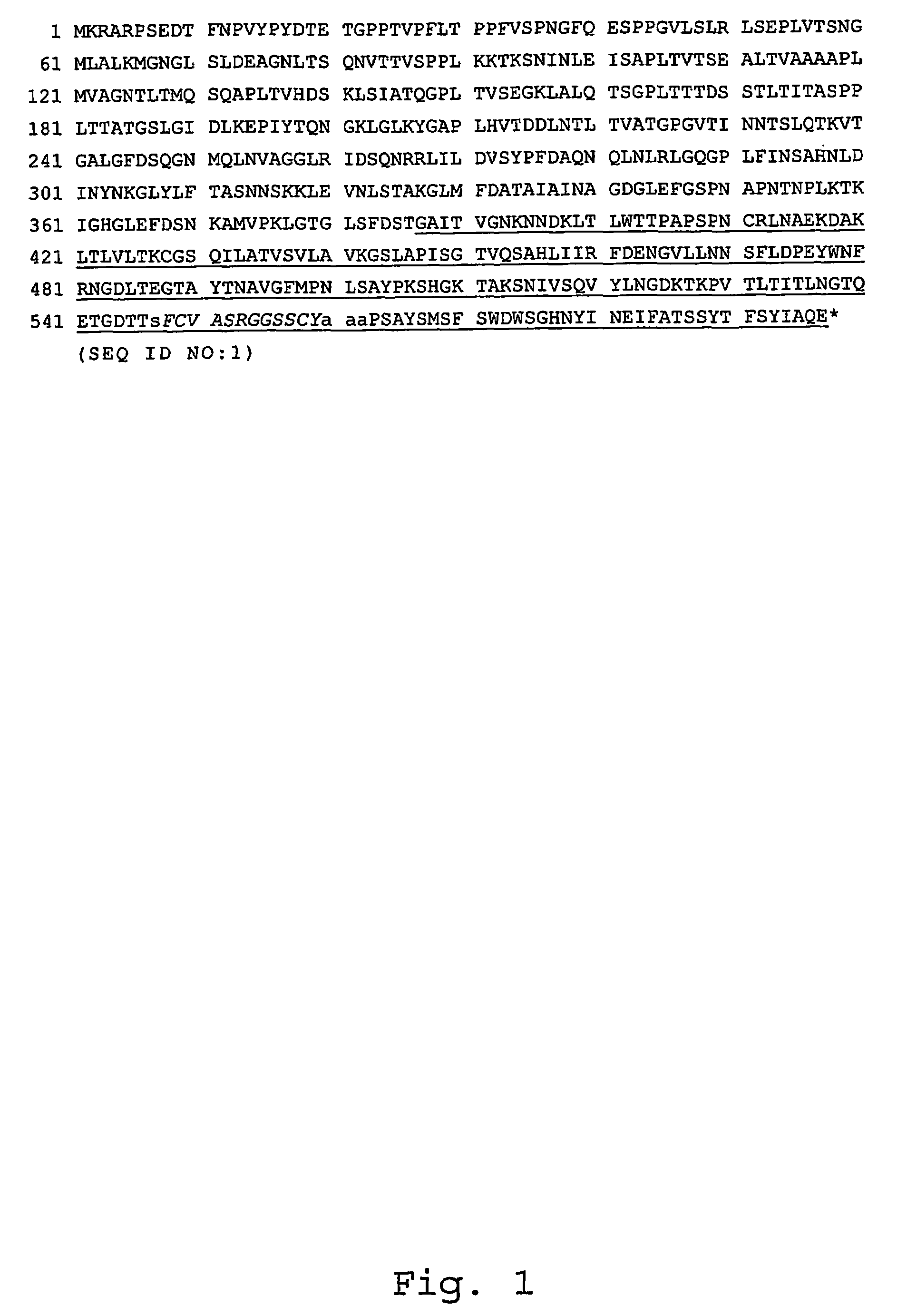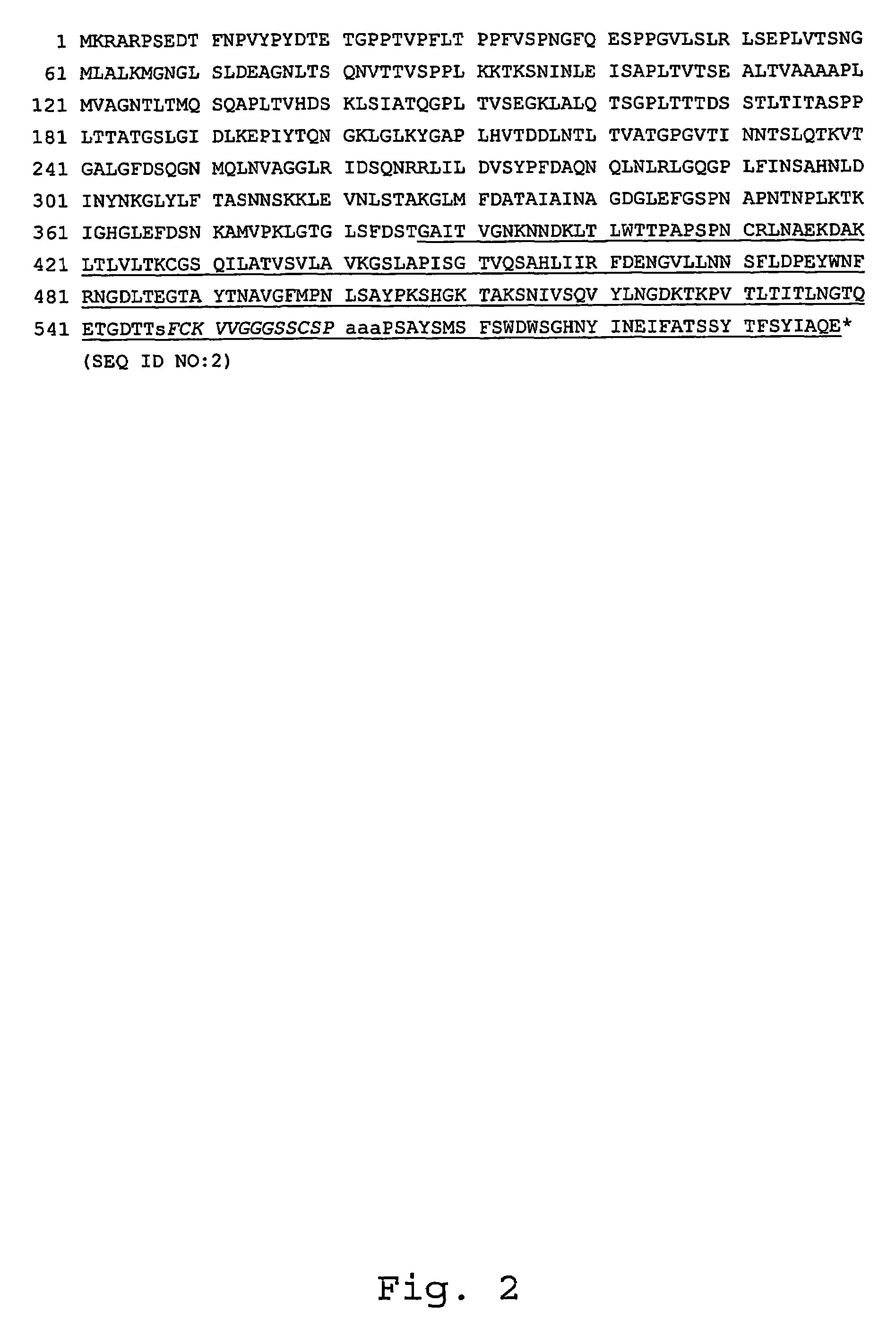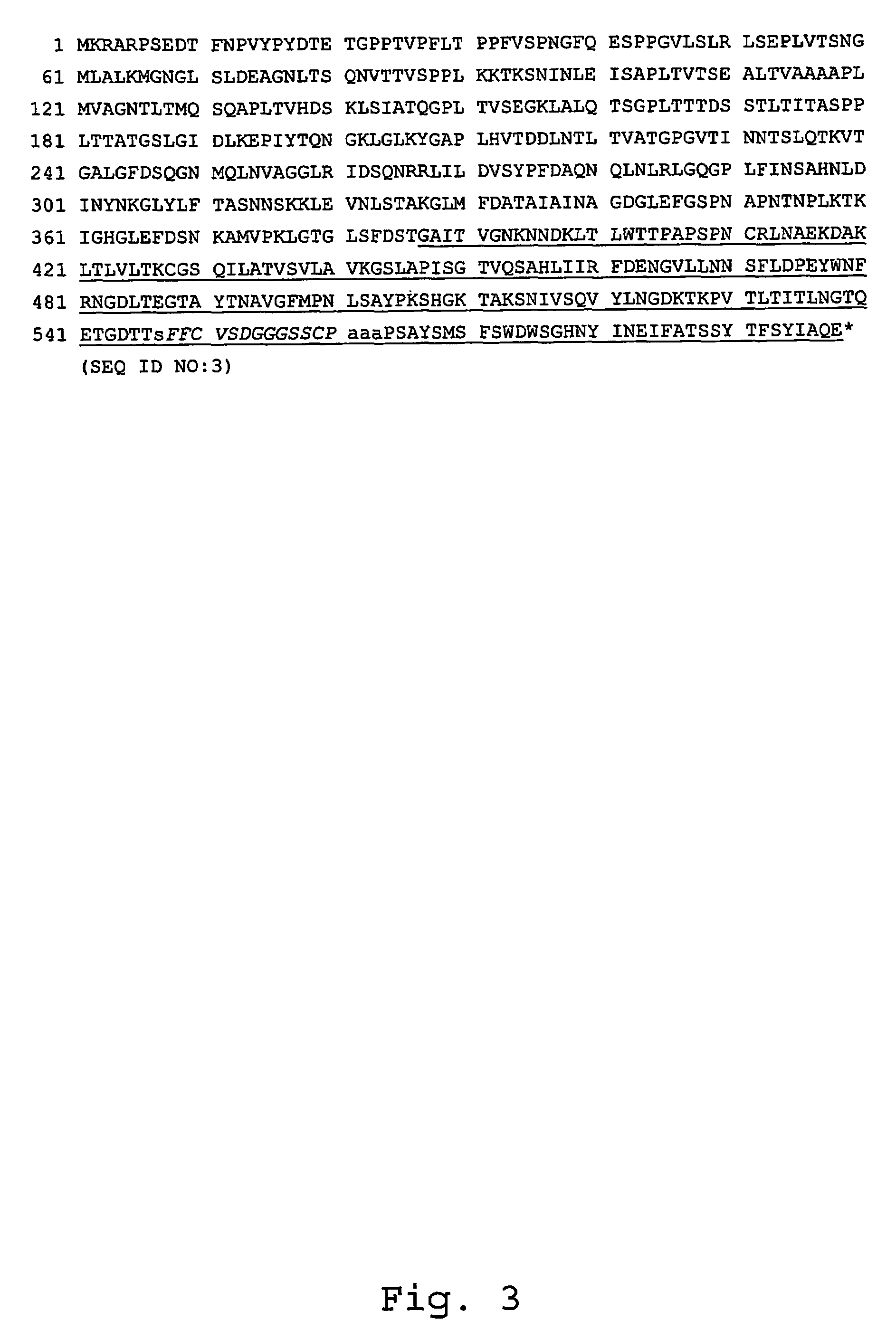Recombinant modified adenovirus fiber protein
a technology of adenovirus and fiber protein, which is applied in the field of recombinant adenovirus having a modified fiber protein, can solve the problems of limiting the exploitation of this strategy, reducing yield, and hampered flexibility of this “fiber swapping” approach, so as to expand the functionality of the adenovirus system, and the wild-type tropism of the adenovirus
- Summary
- Abstract
- Description
- Claims
- Application Information
AI Technical Summary
Benefits of technology
Problems solved by technology
Method used
Image
Examples
example 1
Display of Ad5 Trimeric Knob Domain on the Capsid of Phage λ
[0168]Cells—E. coli strains BB4 and Y1090 were used for phage plating and amplification.
[0169]Construction of plasmid pDknob—Plasmid pNS3785 (Sternberg and Hoess, 1995, Proc. Natl. Acad. Sci. USA 92:1609-1613) was transformed into pDknob by modifying the 3′-end of the λD gene as indicated in FIG. 14.
[0170]An XbaI restriction site was introduced into plasmid pNS3785 to allow cloning of the entire plasmid into the unique XbaI site of lambda Dam15imm21nin5. Plasmid pNS3785 was amplified by inverse PCR using primers XbaI-NS.for (5′-TTTATCTAGACCCAGCCCTAGGAAGCTTCTCCTGAGTAGGACAAATCC-3′; SEQ ID NO:20) and XbaI-NS.rev (5′-GGGTCTAGATAAAACGAAAGGCCCAGTCTTTC-3′; SEQ ID NO:21) (XbaI site underlined). Reaction was performed using a mixture of Taq and Pfu DNA polymerases to increase fidelity of DNA synthesis (95° C.-30 sec, 55° C.-30 sec, 72° C.-20 min, for 25 amplification cycles). The PCR amplification product thus generated was digested...
example 2
λ-borne Ad5 Knob Specifically Binds Human CAR on 911 Cells
[0185]Cells—Human embryonic retinoblast 911 cells were obtained from Invitrogen (Rijswijk, The Netherlands). 911 cells were cultured in Dulbecco's modified Eagle's medium (DMEM) supplemented with 10% (v / v) fetal calf serum (FCS).
[0186]Viruses—The recombinant adenoviruses were propagated on Per.C6 cells and purified by centrifugation in CsCl gradients according to standard protocols (Fallaux et al, 1998, supra).
[0187]FACS Analysis—Binding of phage λknob-wt to human CAR displayed on the surface of 911 cells was monitored as follows. Phage particles (ranging from 0.4×1010 to 6×1010 pfu) were incubated with a suspension of 2×106 cells / ml for 1 hour at room temperature (RT) in binding buffer composed of 3% bovine serum albumin (BSA), 10 mM MgCl2, 1 mM CaCl2 in PBS. Cells were washed with binding buffer and incubated for 45 min at 4° C. with rabbit anti-λ purified Ig in FACS buffer (2% FBS in PBS). Cells were then washed with FACS ...
example 3
Generating a Library of Modified Ad5 Fiber Knobs Displayed on λ
[0190]Viruses—The recombinant adenoviruses were propagated on Per.C6 cells and purified by centrifugation in CsCl gradients according to standard protocols (Fallaux et al, 1998, supra).
[0191]Construction of the λknobΔ-14aa.cys library—Plasmid pDknobΔ-L0 was generated by replacing the BglII / MscI fragment in pD-knobΔ with a PCR amplification product introducing unique SpeI and NotI sites in the HI loop. Two 326 bp and 93 bp DNA fragments were obtained by PCR-amplifying the plasmid pDknob using the primers knob.for2 (5′-AGGCAGTTTGGCTCCAATATCTG-3′; SEQ ID NO:35) and knobHI-Spe / Not.rev (5′-GCGGCCGCACCACTAGTTGTGTCTCCTGTTTCCTGTGTA-3′; SEQ ID NO:36), or knobHI-Spe / Not.for (5′-ACTAGTGGTGCGGCCGCTCCAAGTGCATACTCTATGTCATTT-3′; SEQ ID NO:37) and knob.rev3 (5′-GGATGTGGCAAATATTTCATTAAT-3′; SEQ ID NO:38). These DNA fragments were PCR-ligated. The resulting plasmid pDknobΔ-L0 was linearized by XbaI digestion and the entire plasmid was clo...
PUM
 Login to View More
Login to View More Abstract
Description
Claims
Application Information
 Login to View More
Login to View More - R&D
- Intellectual Property
- Life Sciences
- Materials
- Tech Scout
- Unparalleled Data Quality
- Higher Quality Content
- 60% Fewer Hallucinations
Browse by: Latest US Patents, China's latest patents, Technical Efficacy Thesaurus, Application Domain, Technology Topic, Popular Technical Reports.
© 2025 PatSnap. All rights reserved.Legal|Privacy policy|Modern Slavery Act Transparency Statement|Sitemap|About US| Contact US: help@patsnap.com



